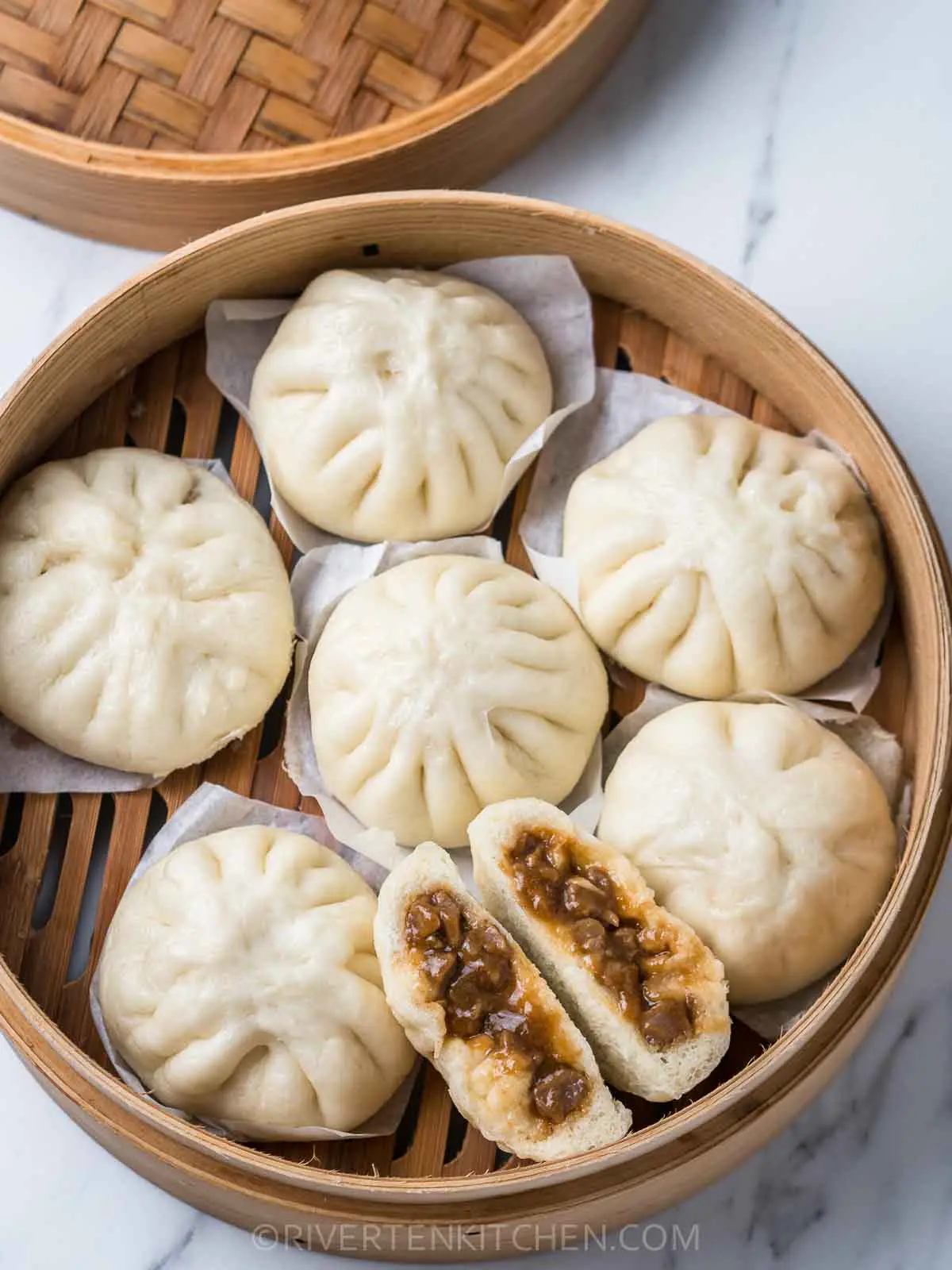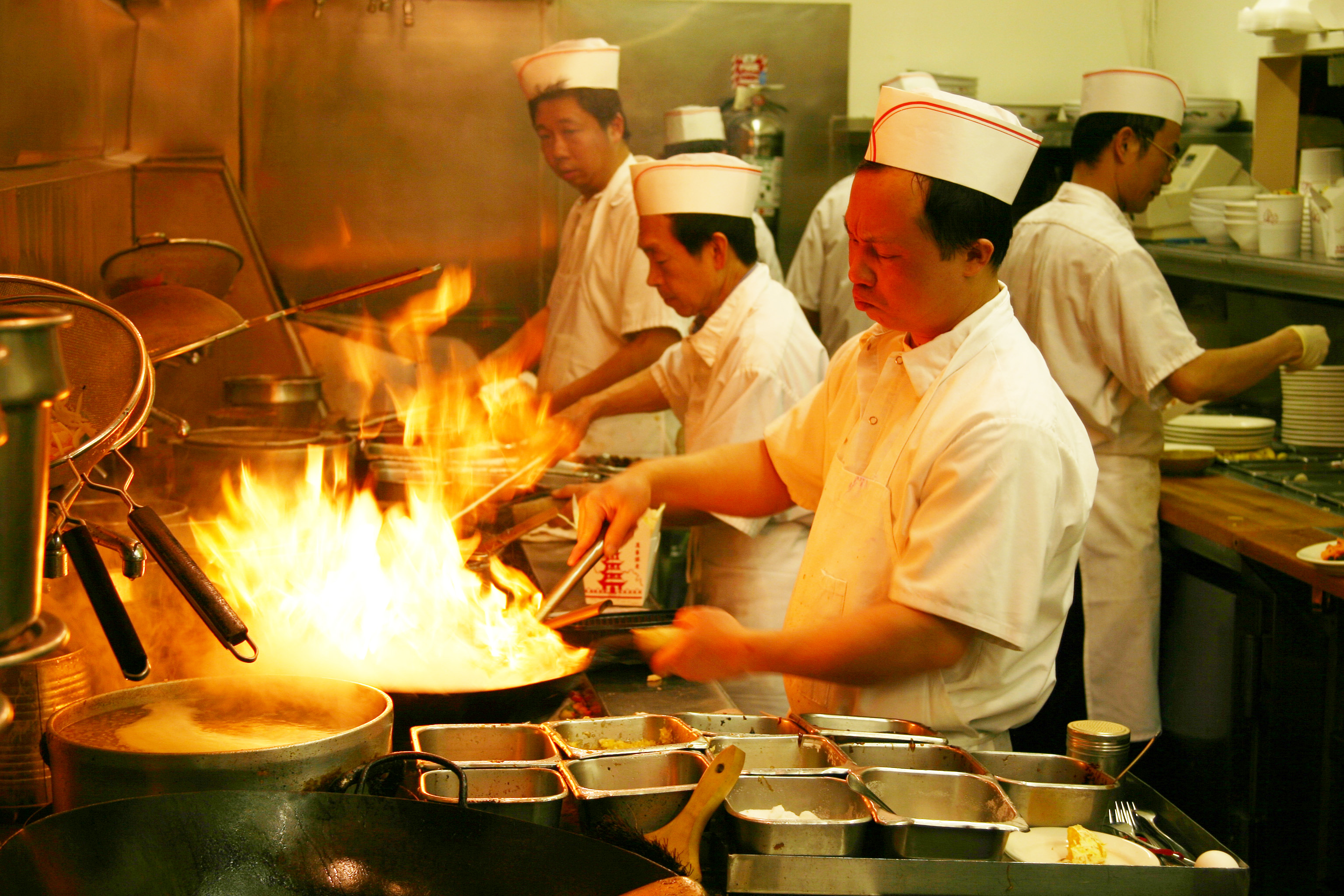|
Siopao
''Siopao'' (), is a Philippine steamed bun with various fillings. It is the indigenized version of the Fujianese ''baozi'', introduced to the Philippines by Hokkien immigrants during the Spanish colonial period. It is a popular snack in the Philippines and is commonly sold by bakeries and restaurants. Description Siopao is derived from the baozi, introduced by Hokkien Chinese immigrants to the Philippines during the Spanish colonial period. The name is derived from Philippine Hokkien ''sio-pau'' (). Historically, the most popular siopao buns in Manila were the ones made by restaurateur Ma Mon Luk at the turn of the 20th century. Siopao differs from the baozi in that it is much larger and is eaten held in the hands like a sandwich. It also uses different traditional fillings. The most common fillings are pork ''asado'' (indigenized braised version of the Cantonese ''char siu'') and '' bola-bola'' (literally "meatball", a combination of pork, chicken, beef, shrimp or salted du ... [...More Info...] [...Related Items...] OR: [Wikipedia] [Google] [Baidu] |
Ma Mon Luk
Ma Wen-lu (), known in the Philippines as Ma Mon Luk (), was a Chinese immigrant best known in the Philippines for his eponymous restaurant, and for being the alleged creator of mami (a noodle soup) and popularizer of siopao (a steamed bun based on the cha siu bao). Early life Ma was born in 1896 in Zhongshan, Guangdong (then known as Xiangshan, Canton) in Qing China. Because of poverty, he was only able to finish junior high school. He self-studied in the Chinese classics to improve himself. He later became a schoolteacher in Canton but earned a lowly salary. In 1918, Ma left for the Philippines to seek his fortune in order to win the hand of his sweetheart, Ng Shih, whose parents disapproved of him because of his poverty. Ma Mon Luk Arriving penniless in Binondo, Manila, Ma decided to peddle his own version of chicken noodle soup. He soon became a familiar sight on the streets of Manila, plodding from Puente de España (now Jones Bridge) to as far as Intramuros and San ... [...More Info...] [...Related Items...] OR: [Wikipedia] [Google] [Baidu] |
Char Siu Bao
''Char siu bao'' () is a Cantonese barbecue-pork-filled ''baozi'' (bun).Hsiung, Deh-Ta. Simonds, Nina. Lowe, Jason. 005 ''The Food of China: A Journey for Food Lovers''. Bay Books. . p. 24. The buns are filled with barbecue-flavored ''cha siu'' pork. They are served as a type of dim sum during ''yum cha'' and are sometimes sold in Chinese bakeries.'' Cha siu'' refers to the pork filling; the word ''bao'' means "bun". Varieties There are two major kinds of ''cha siu bao'': the traditional steamed version is called () or simply (), while the baked variety is usually called (). Steamed ''cha siu bao'' has a white exterior, while the baked variety is browned and glazed. Cantonese cuisine Although visually similar to other types of steamed ''baozi'', the dough of steamed ''cha siu bao'' is unique since it makes use of both yeast and baking powder as leavening. This unique mix of leavening gives the dough of ''cha siu bao'' the texture of a slightly dense, but fine soft bread. ... [...More Info...] [...Related Items...] OR: [Wikipedia] [Google] [Baidu] |
Philippine Asado
Philippine ''asado'' refers to two different Filipino braised meat dishes. The name originates from Spanish ''asado'' ("grilled"), a reference to the original dish it was applied to, the Chinese-Filipino version of ''char siu'' barbecues usually known as pork ''asado''. However, the Filipino versions have evolved to be braised, not grilled. The other Filipino dish also known as ''asado'' is ''asado de carajay''. Unlike the Chinese-derived version, it is savory rather than sweet. Variations Asado de carajay ''Asado de carajay'' is a native ''asado''. The name is derived from Philippine Spanish ''carajay'' ("wok", ''kawali'' or ''kalaha'' in Philippine languages). ''Asado de carajay'' is made with meat (pork, beef, or chicken) braised in soy sauce, bay leaves, peppercorns, calamansi, onions, and various vegetables (usually tomatoes, potatoes, mushrooms, and carrots). It is traditionally cooked in a wok, hence the name. ''Asado de carajay'' is differentiated from the "Chinese-styl ... [...More Info...] [...Related Items...] OR: [Wikipedia] [Google] [Baidu] |
Baozi
Baozi (), Pao-tsih or bao, is a type of yeast-leavened filled bun in various Chinese cuisines. There are many variations in fillings ( meat or vegetarian) and preparations, though the buns are most often steamed. They are a variation of '' mantou'' from Northern China. Two types are found in most parts of China and Indonesia: ''Dàbāo'' (大包, "big bun"), measuring about across, served individually, and usually purchased for take-away. The other type, ''Xiǎobāo'' (小包, "small bun"), measure approximately wide, and are most commonly eaten in restaurants, but may also be purchased for take-away. Each order consists of a steamer containing between three and ten pieces. A small ceramic dish for dipping the baozi is provided for vinegar or soy sauce, both of which are available in bottles at the table, along with various types of chili and garlic pastes, oils or infusions, fresh coriander and leeks, sesame oil, and other flavorings. They are popular throughout China ... [...More Info...] [...Related Items...] OR: [Wikipedia] [Google] [Baidu] |
Philippine Cuisine
Filipino cuisine ( fil, lutong Pilipino/pagkaing Pilipino) is composed of the cuisines of more than a hundred distinct ethnolinguistic groups found throughout the Philippine archipelago. A majority of mainstream Filipino dishes that compose Filipino cuisine are from the food traditions of various ethnolinguistic groups and tribes of the archipelago, including the Ilocano, Pangasinan, Kapampangan, Tagalog, Bicolano, Visayan, Chavacano and Maranao ethnolinguistic groups. The styles of preparation and dishes associated with them have evolved over many centuries from a largely indigenous (largely Austronesian) base shared with maritime Southeast Asia with varied influences from Chinese, Spanish and American cuisines, in line with the major waves of influence that had enriched the cultures of the archipelago, as well as others adapted to indigenous ingredients and the local palate. [...More Info...] [...Related Items...] OR: [Wikipedia] [Google] [Baidu] |
Meatball
A meatball is ground meat rolled into a ball, sometimes along with other ingredients, such as bread crumbs, minced onion, eggs, butter, and seasoning. Meatballs are cooked by frying, baking, steaming, or braising in sauce. There are many types of meatballs using different types of meats and spices. The term is sometimes extended to meatless versions based on vegetables or fish; the latter are also commonly known as fishballs. History The ancient Roman cookbook ''Apicius'' included many meatball-type recipes. Early recipes included in some of the earliest known Persian cookbooks generally feature seasoned lamb rolled into orange-sized balls and glazed with egg yolk and sometimes saffron. This method was taken to the West and is referred to as gilding. Many regional variations exist, including the unusually large '' kufte Tabrīzī'' from Iran's northwestern region, with an average diameter of . '' Poume d'oranges'' is a gilded meatball dish from the Middle Ages. By reg ... [...More Info...] [...Related Items...] OR: [Wikipedia] [Google] [Baidu] |
Char Siu
''Char siu'' () is a Chinese, specifically Cantonese–style of barbecued pork. Originating in Guangdong, it is eaten with rice, used as an ingredient for noodle dishes or in stir fries, and as a filling for '' chasiu baau'' or ''pineapple buns.'' Five-spice powder is the primary spice, honey or other sweeteners are used as a glaze, and the characteristic red color comes from the red yeast rice when made traditionally. It is classified as a type of '' siu mei'' (), Cantonese roasted meat. Meat cuts Pork cuts used for ''char siu'' can vary, but a few main cuts are common: * Pork loin * Pork belly – produces juicy and fatter ''char siu'' * Pork butt (shoulder) – produces leaner ''char siu'' * Pork fat * Pork neck end – very marbled (''jyu geng yuk'') Cantonese cuisine ''Char siu'' literally means "fork roasted" (''siu'' being burn/roast and ''cha'' being fork, both noun and verb) after the traditional cooking method for the dish: long strips of seasoned bone ... [...More Info...] [...Related Items...] OR: [Wikipedia] [Google] [Baidu] |
Manila
Manila ( , ; fil, Maynila, ), officially the City of Manila ( fil, Lungsod ng Maynila, ), is the capital city, capital of the Philippines, and its second-most populous city. It is Cities of the Philippines#Independent cities, highly urbanized and, as of 2019, was the world's List of cities proper by population density, most densely populated city proper. Manila is considered to be a global city and rated as an Alpha – City by Globalization and World Cities Research Network (GaWC). It was the first chartered city in the country, designated as such by the Philippine Commission Act 183 of July 31, 1901. It became autonomous with the passage of Republic Act No. 409, "The Revised Charter of the City of Manila", on June 18, 1949. Manila is considered to be part of the world's original set of global cities because its commercial networks were the first to extend across the Pacific Ocean and connect Asia with the Hispanic America, Spanish Americas through the Manila galleon, galleon ... [...More Info...] [...Related Items...] OR: [Wikipedia] [Google] [Baidu] |
Cantonese Cuisine
Cantonese or Guangdong cuisine, also known as Yue cuisine ( or ) is the cuisine of Guangdong province of China, particularly the provincial capital Guangzhou, and the surrounding regions in the Pearl River Delta including Hong Kong and Macau.Hsiung, Deh-Ta. Simonds, Nina. Lowe, Jason. 005(2005). The food of China: a journey for food lovers. Bay Books. . p17. Strictly speaking, Cantonese cuisine is the cuisine of Guangzhou or of Cantonese speakers, but it often includes the cooking styles of all the speakers of Yue Chinese languages in Guangdong. Scholars categorize Guangdong cuisine into three major groups based on the region's dialect: Cantonese, Hakka and Chaozhou cuisines. The Teochew cuisine and Hakka cuisine of Guangdong are considered their own styles, as is neighboring Guangxi's cuisine despite eastern Guangxi being considered culturally Cantonese due to the presence of ethnic Zhuang influences in the rest of the province. Cantonese cuisine is one of the Eight ... [...More Info...] [...Related Items...] OR: [Wikipedia] [Google] [Baidu] |
Pork
Pork is the culinary name for the meat of the domestic pig (''Sus domesticus''). It is the most commonly consumed meat worldwide, with evidence of pig husbandry dating back to 5000 BCE. Pork is eaten both freshly cooked and preserved; curing extends the shelf life of pork products. Ham, gammon, bacon, and sausage are examples of preserved pork. Charcuterie is the branch of cooking devoted to prepared meat products, many from pork. Pork is the most popular meat in the Western world, particularly in Central Europe. It is also very popular in East and Southeast Asia (Mainland Southeast Asia, Philippines, Singapore, and East Timor). The meat is highly prized in Asian cuisines, especially in Mainland China, for its fat content and texture. Some religions and cultures prohibit pork consumption, notably Islam and Judaism. History Pigs were domesticated in Mesopotamia around 13,000 BC. Charcuterie is the branch of cooking devoted to prepared meat products su ... [...More Info...] [...Related Items...] OR: [Wikipedia] [Google] [Baidu] |







